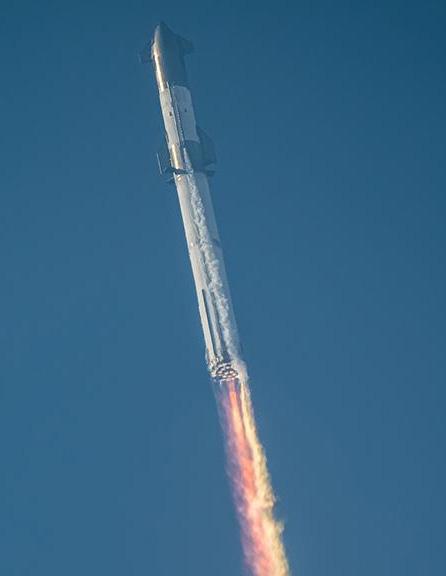
2 minute read
Opinion To Orbit and Beyond
SpaceX, Rocket Lab, Blue Origin, Relativity, Stoke Space
The number of commercial space companies that have been established in recent years has skyrocketed, as interest in space soars. So, what’s all the fuss about? What do these companies actually do, and what are we to do once we escape the confines of Earth?
Advertisement
One category of these new space companies is essentially space tourism, which only really includes Blue Origin, Virgin Galactic and SpaceX. This category has often been called a waste of money and resources, being unnecessary, and largely an experience for the rich or elite, but while the benefits to society more broadly are generally dubious, any spaceflight can push the space industry further, or contribute to science. Inspiration 4 was one such “space tourism” flight, marking the first all-civilian mission to orbit which was operated by SpaceX, with the crew of four (one of whom was chosen by lottery) conducting micro-gravity experiments while in orbit for two days. I’ll leave the value of space tourism up to you, but I’ll certainly be watching the #dearMoon mission when it happens, in which a crew of nine people will be going around the moon in the (hopefully) near future!
The majority of the new space companies are simply space launch services, think SpaceX, Rocketlab, Virgin Orbit, the list goes on - their primary goal is to launch satellites into orbit, for a profit. Their independent status from government agencies, often associated with red tape, allows these companies to operate faster and more cheaply, and their commercial nature means that they are directly in competition with their fellow commercial launch providers. This competition drives companies to find their own niche in the market, as well as provide cheap, efficient, and reliable launch capabilities, spurring on innovation.
And innovate they have.
We’ve seen Rocket Lab, a New Zealand company, successfully operate in the small satellite niche, with Electron, a carbon-fibre rocket which uses electricpump-fed engines, a first for orbital rockets. Similarly, Firefly Aerospace is pioneering a carbon-fibre rocket with a combustion tap-off cycle engine, also a first in orbit. Some crazier launch systems are also out there, with Virgin Orbit launching a rocket off a Boeing 747 mid-flight, and Relativity Space planning to use a fully 3D printed rocket to go to orbit. Stoke Space is another company yet to launch, but is planning to use a radical 100% reusable design, integrating a heat shield and aerospike-esque upper stage engine, not to mention their ambitions to also develop a full-flow staged combustion engine, basically the holy grail of rocket motors. Astra Space builds hall effect thrusters for satellites, while also attempting launches, one of which quite literally went sideways…

(There are some links on the back page if you’d like to have a watch, plus links to find out more about the above companies/designs.)
Now for the main course, SpaceX. SpaceX really does it all. They’ve developed the Falcon 9 rocket, with reusable boosters, the Raptor engine (using the coveted full-flow staged combustion cycle), are building their own satellite constellation, Starlink, not to mention their development of Starship, the most powerful rocket to have ever flown. And what they’re doing with all this technology is also incredible – they’ve shuttled astronauts to the ISS, run the aforementioned Inspiration 4 mission, and have the ultimate aspiration to use Starship to go to Mars, making humans an interplanetary species.




